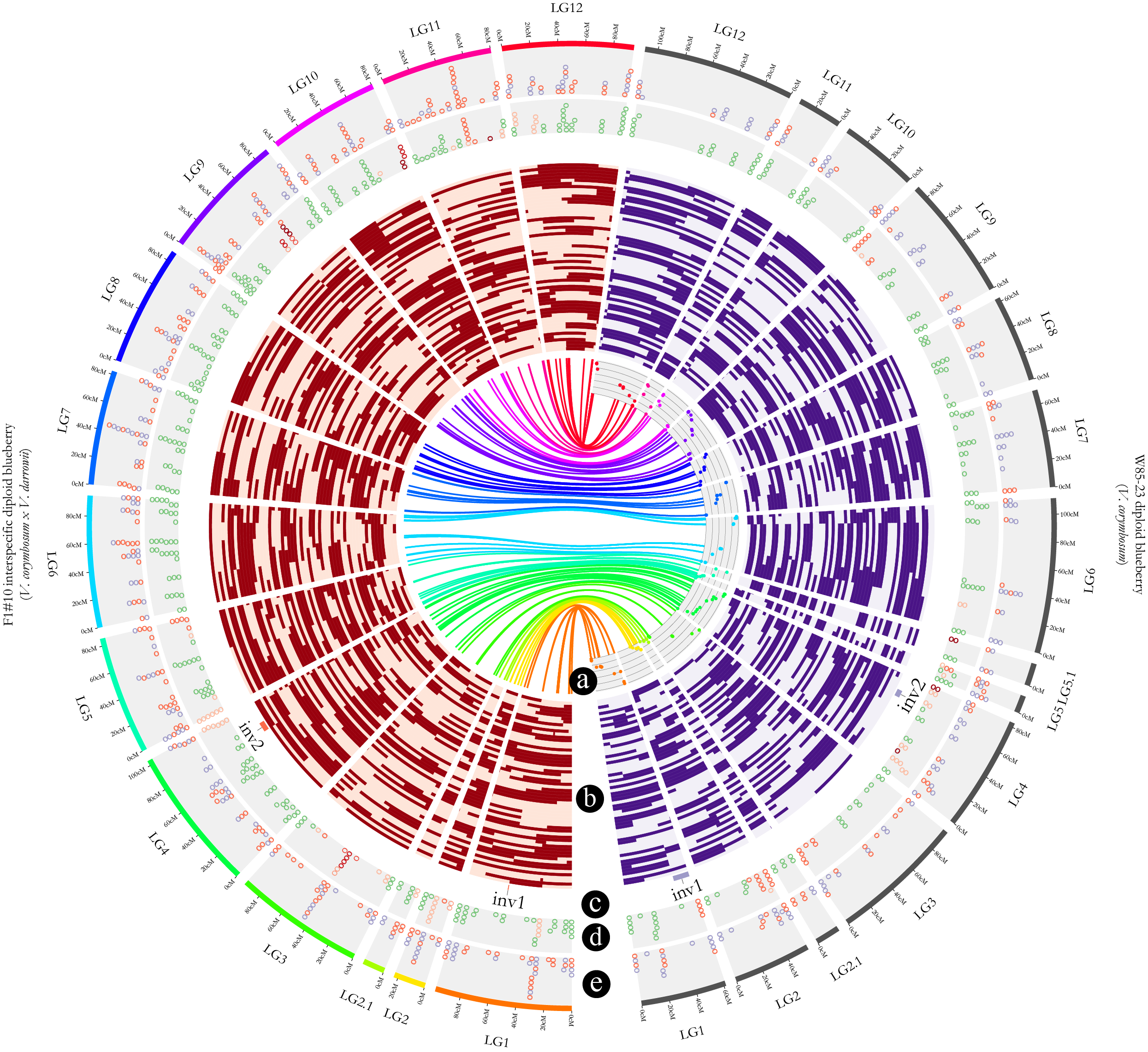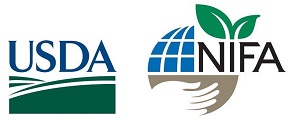
A cornerstone of VacCAP is to establish genomic resources and significantly expand the community’s ability to identify and validate DNA markers associated with economically important traits in blueberry and cranberry. That objective is coming closer to fruition thanks to Dr. Patrick Edger, Co-PD and Associate Professor at Michigan State University, and his team. The Edger lab’s role is to develop the first pangenome for Vaccinium—specifically for blueberry and cranberry.
“What we’re doing here is identifying the unique genes that are only present in some cultivars that are associated with superior fruit quality,” Edger said. “By making direct comparisons among different genomes, as well as layering on all the metabolite variation that’s been profiled, we’re going to make direct [fruit quality] associations with these novel genes that consumers ultimately will appreciate.”
Edger defines the pangenome as a collection of genomes from multiple individuals of a species or group. His team is trying to quantify gene content differences within the genomes in addition to the “classical mutations”.
“When we [used to] talk about genetic differences, we typically thought of it as in the context of very specific types of mutations, like single nucleotide polymorphisms, where there’s base pair substitutions,” Edger said. “Or insertions or deletions, where DNA sequences are either added or missing from a particular gene. That’s the way we traditionally thought of things: that phenotypic variation—or the way that organisms look—was largely caused by these sorts of mutational differences.”
But Edger says that in the last five to 10 years, there’s been a discovery that other types of mutations—including ones that duplicate entire genes—actually cause considerable amounts of phenotypic variation, and have been shown to be quite prevalent in various animal and plant systems.
“We are trying to quantify the copy number variation of every gene in the genome, within blueberry or cranberry, and between both crops,” Edger said. “In addition to that there’s something called presence absence variation, where some genes are uniquely present in only a subset of individuals within the species. We are currently quantifying both presence-absence and copy-number variation in both crops.”
This is important because all of this collectively contributes to the variation of important traits—certain mutations may cause some genes not to work as well, but in certain instances better. With all this new information, the ultimate goal is to understand the influence of genetic variation and mutations on fruit quality characteristics.
“We are trying to understand how all this genetic variation influences phenotypic variation, particularly on fruit quality traits,” Edger said. “We’ve known for the past 10-20 years that fruit quality traits are influenced by gene duplications. We have already uncovered a lot of different gene content variation between different lines.”
Edger’s team is currently assembling 24 genomes for blueberry, and 12 genomes for cranberry. They are then making direct comparisons between all of them—including between blueberry and cranberry genomes—to try to quantify what genes are uniquely present in individual crop types, as well as individual genomes.
According to Edger, there’s a number of challenging aspects to assembling a pangenome and people can underestimate the difficulty of annotating various features in the genome.
“We now have a high-quality annotation for each genome, leveraging a wide variety of different evidence,” Edger said. “But we are also leveraging alternative approaches that don’t require any annotation for constructing and evaluating the pangenome.”
Edger’s team is nearly done with assembling the pangenomes, with the final version anticipated within the next 1-2 months.
Developing these genomes is a key part of the VacCAP mission. Edger says there are two main reasons why the project needed to develop a pangenome. The first is, could VacCAP leverage the pangenome by identifying features or genes in the genome that were actually shared in common between blueberries and cranberries that were evenly spaced across all the chromosomes?
“Our goal is to develop a single genotyping platform that would work for not only breeders of southern highbush and northern highbush blueberry, but also cranberry and possibly other Vaccinium crops,” Edger said. “Let’s say there was a huckleberry breeding program that required molecular breeding tools. They could leverage these VacCAP tools without having to come up with another CAP that was huckleberry specific. The idea is that those tools could be used by any Vaccinium breeder or geneticist and accelerate informed breeding efforts.
The second aspect is to identify unique cultivar specific genes, as well as identifying the underlying genetics that may encode favorable traits. Edger notes that a small subset of those genes would also be on the genotyping array.
“Over the next year, our focus will be to identify genetic variants associated with superior fruit quality,” Edger said. “These genetic variants will serve as the foundation of a lot of the downstream analyses including as molecular markers to guide future breeding efforts.”













